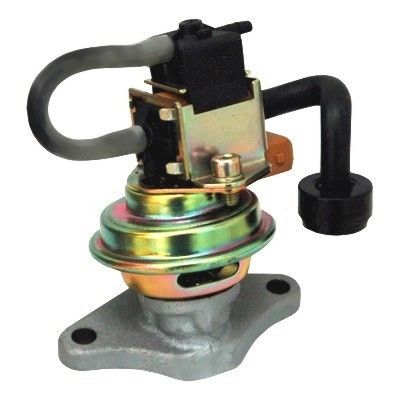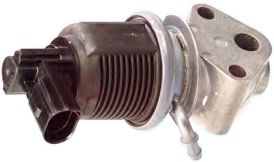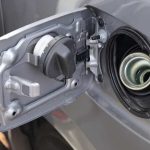What Should You Know about EGR Valve?
The EGR valve of an average car is believed to have a lifespan of around 10 years in service. This is the reason why it is a complete must that you maintain this valve properly if you want to prevent any issues related to the overall performance of your vehicle.
Once you notice that there is a fuel smell coming out from under the rough idling or hood, it signifies that it is about time for you to replace your valve. However, most of the time, there is actually no need for you to dispose of it just yet. This kind of problems may also arise if there are excessive amounts of gunk and carbon that built up on the valve after some time that can then prevent it from functioning properly and efficiently.

If ever this happens, you should learn how to clean the valve the right way so that you can avoid the problems above and other concerns that may happen along the way.
Table of Contents
What is an EGR Valve?
EGR or exhaust gas recirculation valve is among the most vital components of the engine of your vehicle. This valve is a unique type of emissions-control device that can be found at the center of the intake manifold and exhaust manifold.
It is usually closed when the engine is turned on. But, the moment the engine is under load and heats up, the valve is going to open up eventually. The process allows a specific amount of the burned exhaust gas to get into the intake manifold prior to it introducing fresh air again to the engine.

Even though this step may sound counterintuitive, this is the reason why it is possible for today’s modern car engines to run for longer in a more efficient manner. The combustion mix retains the lower temperature of combustion that also reduces the nitrogen oxides or NOx emissions. While the exhaust fumes can be very beneficial, these may end up clogging the valve after they collect over time. It can clog the valve and cause many other engine issues.
Car experts all agree that you need to clean the valve every several years. The 50,000-mile gauge can be used as your point of reference to let you know when it is time to do some cleaning.
Telltale Signs That It’s Time to Clean
By now, you already have some idea on how the EGR valve functions and why it requires cleaning every now and then. The next step is for you to learn when cleaning is necessary or when it should be done in the first place. It is an important step you should know since there are many people out there who simply throw away the valve without even realizing that they can still restore it to its original function with a little bit of cleaning.
Since the exhaust gas recirculation valve is related to emission, the symptoms are not really that obvious. However, as long as you know what you should watch out for, you will be able to easily tell when it is time for you to give the valve some cleaning.
Some of the telltale symptoms you should watch out for include the following:
- Reduced gas mileage
- Difficulty in starting the vehicle engine
- Engine vibration
- Engine ping if under load
- Engine runs hot easily
- Poor engine acceleration during drive
- Rough idle
- Unburned gas fumes odor
How to Clean the EGR Valve
Here are the steps you need to follow to clean the exhaust gas recirculation valve and optimize the overall performance of your car.
- Before you begin cleaning the valve, see to it that you place your vehicle on an even and flat surface. You also have to make sure that it is in the Park position, with all the brakes engaged. You also need to switch off the engine of your vehicle. Remove the cables on the negative terminal of the battery.
- Look for the exhaust gas recirculation valve. There are basically three types that may vary based on the model and make of your vehicle. These are electronic-controlled digital valve, electronic vacuum-controlled valve, and vacuum-controlled unit. Refer to your vehicle’s manual for you to determine the specific type of valve that your vehicle has and to know its exact location.
- Take off the valve and ensure that you remove the rest of the car parts that might be in the way. Don’t forget to unplug all the electrical connectors that are attached to the valve. You should also unscrew the mounting bolts to remove them. You also need to take out the gasket. If ever the gasket shows some signs of uneven wear or if it is already damaged, make sure to throw it away and get a new replacement.
- When cleaning the valve, it is important that you wear a pair of gloves that is resistant to acids. You also need to put on a pair of safety glasses because the carbon deposits may become airborne during the process. You can then spray the cleaner on the carbon deposits. Use a dull scraper and pipe cleaning brush to eliminate any buildup of carbon. You should repeat the whole process until you remove all the carbon deposits. Use a clean piece of cloth to wipe off the surface.
- If ever it is too difficult to clean the valve with the use of the pipe cleaning brush, you can try to soak it in the cleaning solution for several minutes. See to it that you remove all the electronic and plastic parts as you do so. Once you are done soaking, you can repeat the process of brushing once again.
- After you have finished cleaning, put the EGR valve back to its original location. You should check if the device is working. The cleaning was successful if Check Engine display is not on anymore.
These are the important things you should know about EGR valve.










